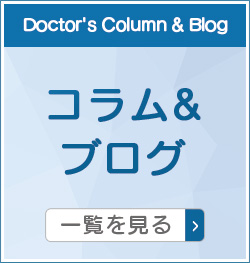昨年の3月にウィーンで開催された第1回の線維筋痛症の国際学会に参加してきましたが、残念なことに日本人医師は私一人でした。第2回の今年は、Covid-19パンデミックのため延期に加えてバーチャルでの開催となりました。
本日紹介する演題のサマリーは、線維筋痛症(FM)の診断・分類基準の変遷が中心です。
米国リウマチ学会(ACR)は1990年の基準から、2016年の基準へ変更しました。新しい基準では広汎性疼痛指数(WPI-0~19の尺度)と症状重症度(SS-0~12の尺度)の概念が初めて導入されました。さらにその得点の和で多症状性苦痛尺度(PDS - 0~31の尺度)を定義しています。
しかし、杉並国際クリニックでは、圧痛点を正確に計上し評価することに熟練していることと、昨日ご紹介した中枢性感作指標を導入することによって、臨床の目的を十分に果たすことが可能なため、診断においては1990年基準で十分であると考えています。
さて、このサマリーでは、リハビリテーション治療の観点からは、2017年の欧州リウマチ連盟(EULAR)のガイドラインが紹介されています。そこでは、特に身体運動(有酸素運動と強化運動の両方)の観点から、その重要性が確立(強い再推奨、100%同意)されています。水氣道は有酸素運動を基礎とし、間欠的に強化運動が組み込んでいますが、20年に及ぶ実績から、身体運動が線維筋痛症に極めて有力な治療手段であることを、実際に経験してきました。
また演者は、情報通信技術によって提供される現在の可能性のおかげで、「運動は自宅で施行され、患者が独立して安全に行うことができるようになった旨を紹介しています。たしかに、youtubeでも様々なエクササイズの動画が紹介されていますが、どのエクササイズが効果的な方法なのかは現時点において確認することができませんでした。今後も、注意深く情報を収集していきたいと考えています。
Focusing on Early Diagnosis, Rehabilitation and Prevention
早期診断・リハビリテーション・予防を中心に
Marco Di Carlo
(マルコ・ディ・カルロ)
Polytechnic University of Marche, Italy
(マルケ・ポリテクニク大学、イタリア)
Summary
Rheumatological Clinic, Università politecnica delle Marche, Ospedale “Carlo Urbani”, Jesi (Ancona), Italy.
Fibromyalgia (FM) is a complex chronic pain condition that affects at least 2% of the adult population in Western countries. The diagnostic difficulties are still many for this disease, and justify a diagnostic delay of more than two years on average.
Over the years, multiple sets of diagnostic/classification criteria have been developed. While the criteria of the American College of Rheumatology of 1990 have been widely used for two decades, their application has been overcome by the adoption of the 2010 ACR criteria, which introduced for the first time the concepts of widespred pain index (WPI – a scale from 0 to 19) and symptom severity (SS – a scale from 0 to 12), whose sum defines the polysymptomatic distress scale (PDS – a scale from 0 to 31). While the 1990 ACR criteria were mainly criticized for the difficulty, especially by non-rheumatologists, to correctly perform the tender point count, the 2010 ACR go beyond the need to perform an objective examination. They were subsequently continued in 2011 and 2016, and the various sets of ACR criteria confirmed their robustness. In particular, in the 2016 ACR criteria widespread pain is defined as pain in at least four of the five regions (excluding jaw, chest and abdominal pain), specifying the symptoms covered in the SS as headache, pain or cramping in the lower abdomen, and depression. These criteria specifically state that “a diagnosis of FM is valid independently of other diagnoses. A diagnosis of FM does not exclude the presence of other clinically important diseases”. More recently, Analgesic, Anesthetic, and Addiction Clinical Trial Translations Innovations Opportunities and Networks (ACTTION) (AAPT) introduced new criteria for FM focused on (1) multi-site pain (MSP), defined as 6 or more pain sites from a total of 9 possible sites, (2) moderate to severe or fatigue sleep problems, (3) MSP plus fatigue or sleep problems must have been present for at least 3 months. Sensitivity, specificity and diagnostic performance, especially in early stages of disease, of each set of criteria should be evaluated in future studies.
Linked to the concept of early diagnosis are the currently available screening tools, which help the early identification of key symptoms of FM, and the concept of prevention. Factors that can predict the onset of FM are still largely unknown, although some genetic characteristics, some adverse life experiences, poor response to stress and some trigger events are recognized as predisposing factors to the onset of FM.
From the rehabilitation treatment point of view, it has a pivotal role in FM management. The 2017 EUropean League Against Rheumatism guidelines established its importance (strong for reccomendation, 100% agreement), particularly in terms of physical exercise (both aerobic and strengthening exercise). Thanks to the current possibilities provided by Information and Communication Technologies, exercise can be dispensed at home and conducted safely by patients independently.
線維筋痛症(FM)は、欧米諸国の成人人口の少なくとも2%に影響を及ぼす複雑な慢性疼痛疾患である。この疾患の診断は未だに困難であり、診断が平均して2年以上遅れることを正当化している。
長年にわたり、複数の診断・分類基準が開発されてきた。1990年の米国リウマチ学会(ACR)の基準は20年間広く使われてきたが、2010年のACR基準の採用により、その適用は克服され、広汎性疼痛指数(WPI-0~19の尺度)と症状重症度(SS-0~12の尺度)の概念が初めて導入された。その得点の和で多症状性苦痛尺度(PDS - 0~31の尺度)を定義する。
1990年のACR基準は、特にリウマチ専門医以外の人が圧痛点の計上を正確に行うことが困難であると批判されてきたが、2010年のACRは客観的な検査を行う必要性としては行き過ぎである。その後2011年と2016年にも継続され、様々なACR基準のセットでその堅牢性が確認された。特に2016年のACR基準では、広汎性疼痛を5部位のうち少なくとも4部位(顎、胸部、腹部を除く)の疼痛と定義し、症状重症度(SS)の対象となる症状を頭痛、下腹部痛やけいれん、うつ状態としている。
これらの基準では、「FMの診断は他の診断とは無関係に有効である」と具体的に述べられている。FMの診断は、他の臨床的に重要な疾患の存在を排除するものではない。
さらに最近では、鎮痛・麻酔・中毒臨床試験 翻訳革新の機会とネットワーク
(ACTION)
(AAPT)は、FMの新しい基準を導入し、
(1)多部位疼痛(MSP)、合計9つの可能性のある部位から6つ以上の疼痛部位、
(2)中等度から重度の疼痛または疲労性睡眠障害、
(3)MSP+疲労性または睡眠障害が少なくとも3ヶ月間存在していなければならない、
と定義している。
今後の研究では、各基準セットの感度、特異度、診断性能、特に疾患の初期段階での診断性能を評価する必要がある。
早期診断の概念に関連して、FMの主要な症状の早期発見に役立つ現在利用可能なスクリーニングツール、および予防の概念がある。
FMの発症を予測する因子は、遺伝的特徴、いくつかの不利な人生経験、ストレスに対する反応の悪さ、引き金となる出来事などがFM発症の素因として認識されているが、まだほとんど知られていない。
リハビリテーション治療の観点からは、それはFMの管理において極めて重要な役割を担っている。
2017年の欧州リウマチ連盟(EULAR)のガイドラインでは、特に身体運動(有酸素運動と強化運動の両方)の観点から、その重要性が確立されている(強い再推奨、100%同意)。情報通信技術によって提供される現在の可能性のおかげで、運動は自宅で施行され、患者が独立して安全に行うことができるようになった。
At Home Exercises for Fibromyalgia Sufferers
リンクは線維筋痛症患者のための自宅エクササイズ
ARCHIVE
- 2024年4月
- 2024年3月
- 2024年2月
- 2024年1月
- 2023年12月
- 2023年11月
- 2023年9月
- 2023年7月
- 2023年5月
- 2023年4月
- 2023年1月
- 2022年12月
- 2022年11月
- 2022年9月
- 2022年7月
- 2022年6月
- 2022年5月
- 2022年4月
- 2022年3月
- 2022年2月
- 2022年1月
- 2021年12月
- 2021年11月
- 2021年10月
- 2021年9月
- 2021年8月
- 2021年7月
- 2021年6月
- 2021年5月
- 2021年4月
- 2021年3月
- 2021年2月
- 2021年1月
- 2020年12月
- 2020年11月
- 2020年10月
- 2020年9月
- 2020年8月
- 2020年7月
- 2020年6月
- 2020年5月
- 2020年4月
- 2020年3月
- 2020年2月
- 2020年1月
- 2019年12月
- 2019年11月
- 2019年10月
- 2019年9月
- 2019年8月
- 2019年7月
- 2019年6月
- 2019年5月
- 2019年4月
- 2019年3月
- 2019年2月
- 2019年1月
- 2018年12月
- 2018年11月
- 2018年10月
- 2018年9月
- 2018年8月
- 2018年7月
- 2018年6月
- 2018年5月
- 2018年4月
- 2018年3月
- 2018年2月
- 2018年1月
- 2017年12月
- 2017年11月
- 2017年10月
- 2017年9月
- 2017年8月
- 2017年7月
- 2017年6月
- 2017年5月
- 2017年4月
- 2017年3月
- 2017年2月
- 2017年1月
- 2016年12月
- 2016年11月
- 2016年10月
- 2016年9月
- 2016年8月
- 2016年7月
- 2016年6月
- 2016年5月
- 2016年4月
- 2016年3月
- 2016年2月
- 2016年1月
- 2015年12月













